

/en/outlook2010/sending-and-receiving-email/content/
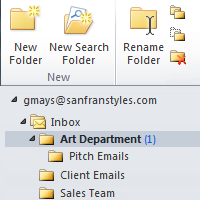
Once you start using Outlook regularly, it can be difficult to keep up with all of your messages. Fortunately, there are several features that can help you manage and organize your messages.
In this lesson, you'll learn how to create folders, apply categories, and set rules. We'll also talk about using flags to manage your messages and deleting messages from your inbox.
Outlook gives you many different tools for managing your email, including folders, rules, and categories. You can use these tools to help organize your email.
Folders can help keep your messages organized. There are four default folders in Mail view: Inbox, Drafts, Sent Items, and Deleted Items. Just like the folders on your computer, folders in Outlook can be nested to create multiple layers of organization. For example, you might create several folders within the Inbox folder to keep track of the different types of messages you receive.
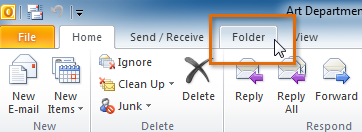 Clicking the Folder tab
Clicking the Folder tabClick the buttons in the interactive below to learn more about using the Folder tab.
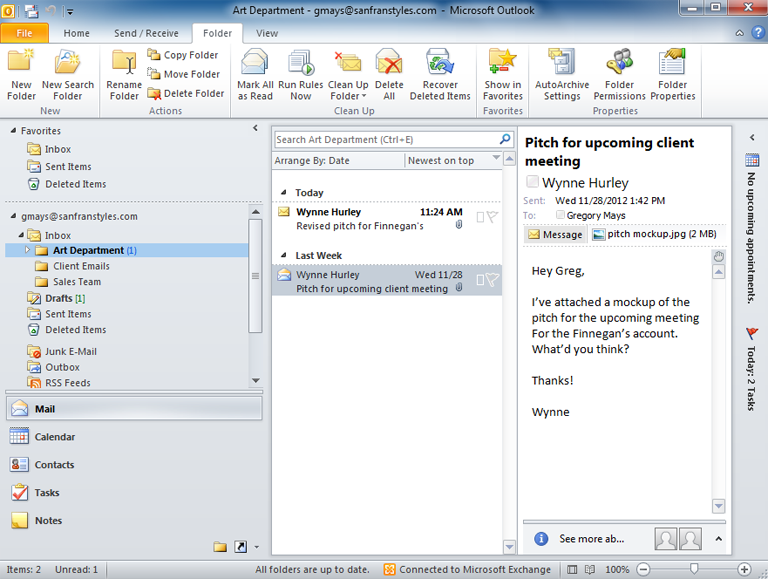
Click here to create a new folder. Be sure to choose the location for the new folder before clicking this button.
For example, if you wanted to create a new folder within your Inbox folder, you would select the Inbox folder and then click the New folder button.
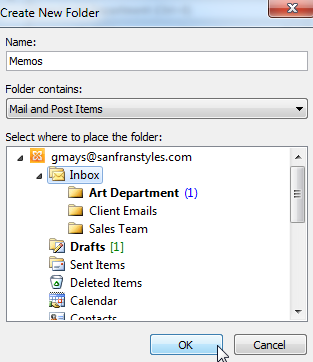
You can use Search folders to automatically find and organize certain types of emails.
For example, you could create a search folder for messages with certain words or phrases. Any messages matching the criteria will appear in the folder automatically.
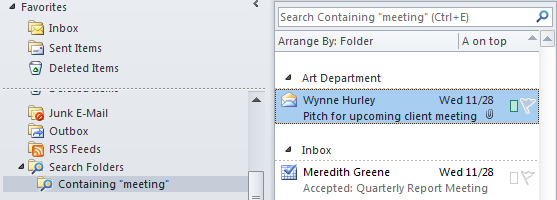
Click here to rename the currently selected folder.

Click here to include the currently selected folder in the Favorites list at the top of the Navigation pane.
The commands in the Clean Up Group will help you keep your folders neat and organized, including shortcuts for marking all message as read, applying rules, and recovering deleted messages.
Just like the folders on your computer, folders can be nested to create multiple layers of organization.
Click the arrow next to a folder to see the folders nested within it. Click again to collapse the folders.

Before you create a new folder, you must select the desired location for that folder. In our example, we'll create a folder within the Inbox folder to help organize messages containing important memos.
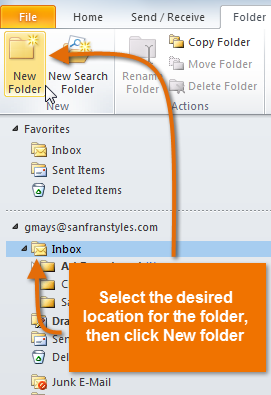 Clicking New Folder
Clicking New Folder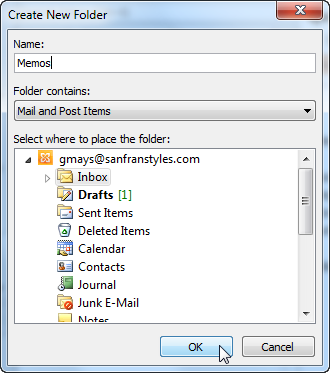 Creating a new folder
Creating a new folder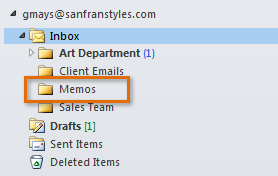 The newly created folder
The newly created folderCategories can make it easier to find and organize your messages. Applying a category is much like moving a message to a folder, but with one important difference: You can apply multiple categories to any message. For example, if you received a message about an upcoming sales meeting, you could apply both the Sales and Meetings categories. Categories are designed to work any way you want—it's easy to rename categories, choose new category colors, and even create new categories.
Outlook 2010 offers six default categories, which are named according to their colors. You may want to customize the category names before you start using them to organize your messages.
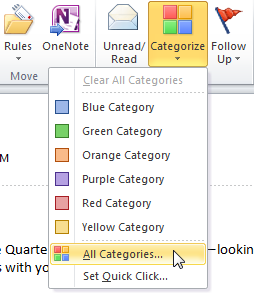 Customizing default categories
Customizing default categories Renaming a category
Renaming a category Adding a custom category name and color
Adding a custom category name and color The customized category
The customized category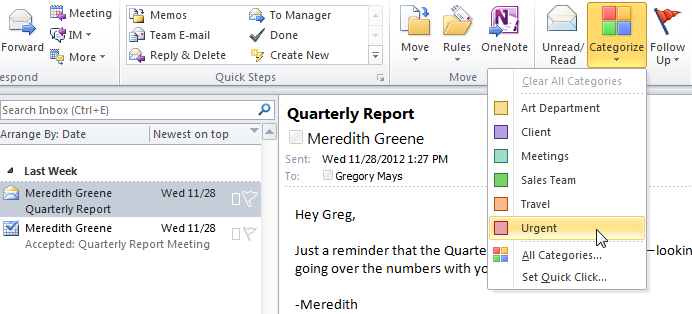 Applying a category
Applying a category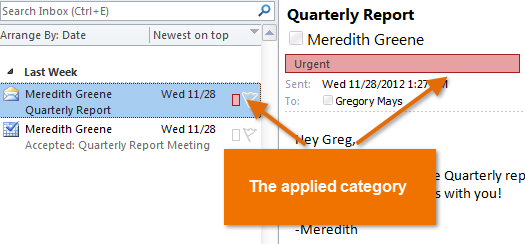 The applied category in the View and Reading panes
The applied category in the View and Reading panesOnce you've applied categories to some of your messages, you can easily view all of the messages in any given category by using a filter. For example, you may wish to view messages in the Meetings category so you can see everything that pertains to an upcoming meeting.
 Filtering by category
Filtering by category Messages filtered by category
Messages filtered by categoryRules can save you a lot of time by automatically performing commands like moving or deleting messages as they arrive. For example, if you always move emails from a certain person to a folder, you could create a rule to do this automatically. You can create rules that look for a specific sender, recipient, subject, or specific words that are contained in the body of the email.
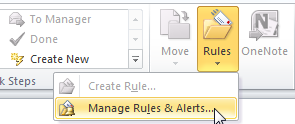 Adding a new rule
Adding a new rule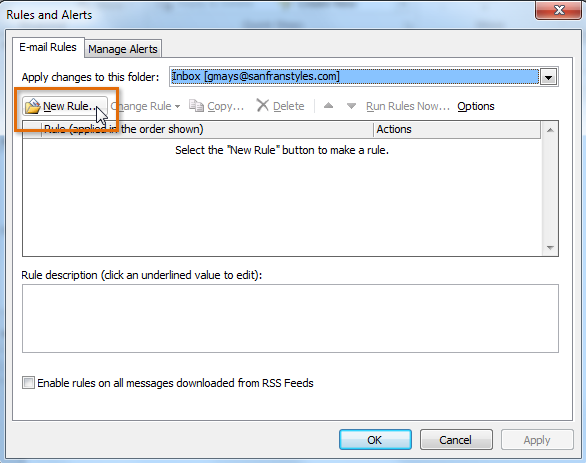 Clicking the New Rule... button
Clicking the New Rule... button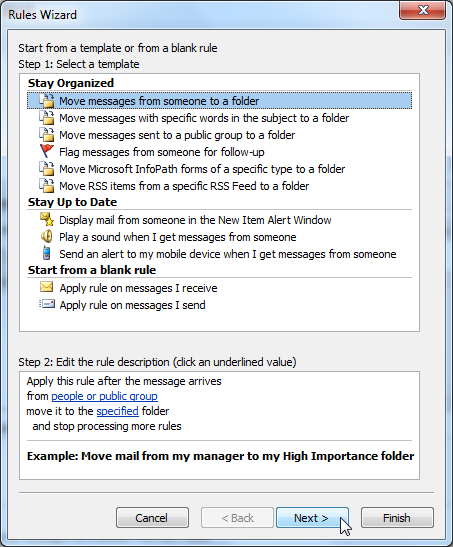 The Rules Wizard
The Rules WizardEven with folders, categories, and rules, it can be difficult to keep up with each message you receive. Review some of the strategies below to learn how to manage your messages more effectively.
As you respond to different messages throughout the day, some may prove to be more time sensitive than others. If you want to make sure you respond to urgent messages quickly, you can use flags. Flags create a task associated with the message, which will prompt you with reminders until the task is complete.
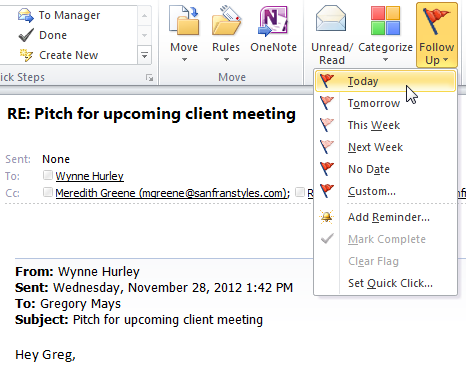 Applying a flag to a message
Applying a flag to a message Marking a task as complete
Marking a task as completeWhen you delete messages from your inbox, they are first moved to the Deleted Items folder, which is similar to the Recycle Bin on your computer. To delete messages permanently, you will need to empty the Deleted Items folder.
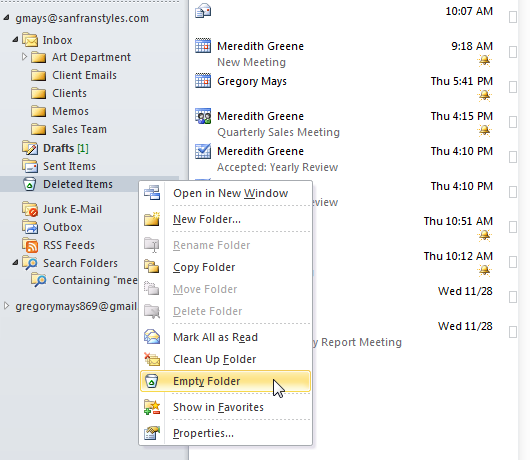 Clicking Empty Folder
Clicking Empty Folder Confirming the deletion
Confirming the deletion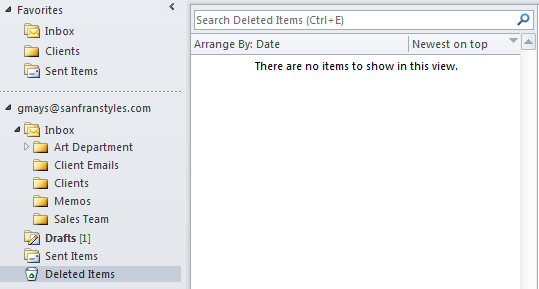 The emptied Deleted Items folder
The emptied Deleted Items folder/en/outlook2010/managing-contacts/content/